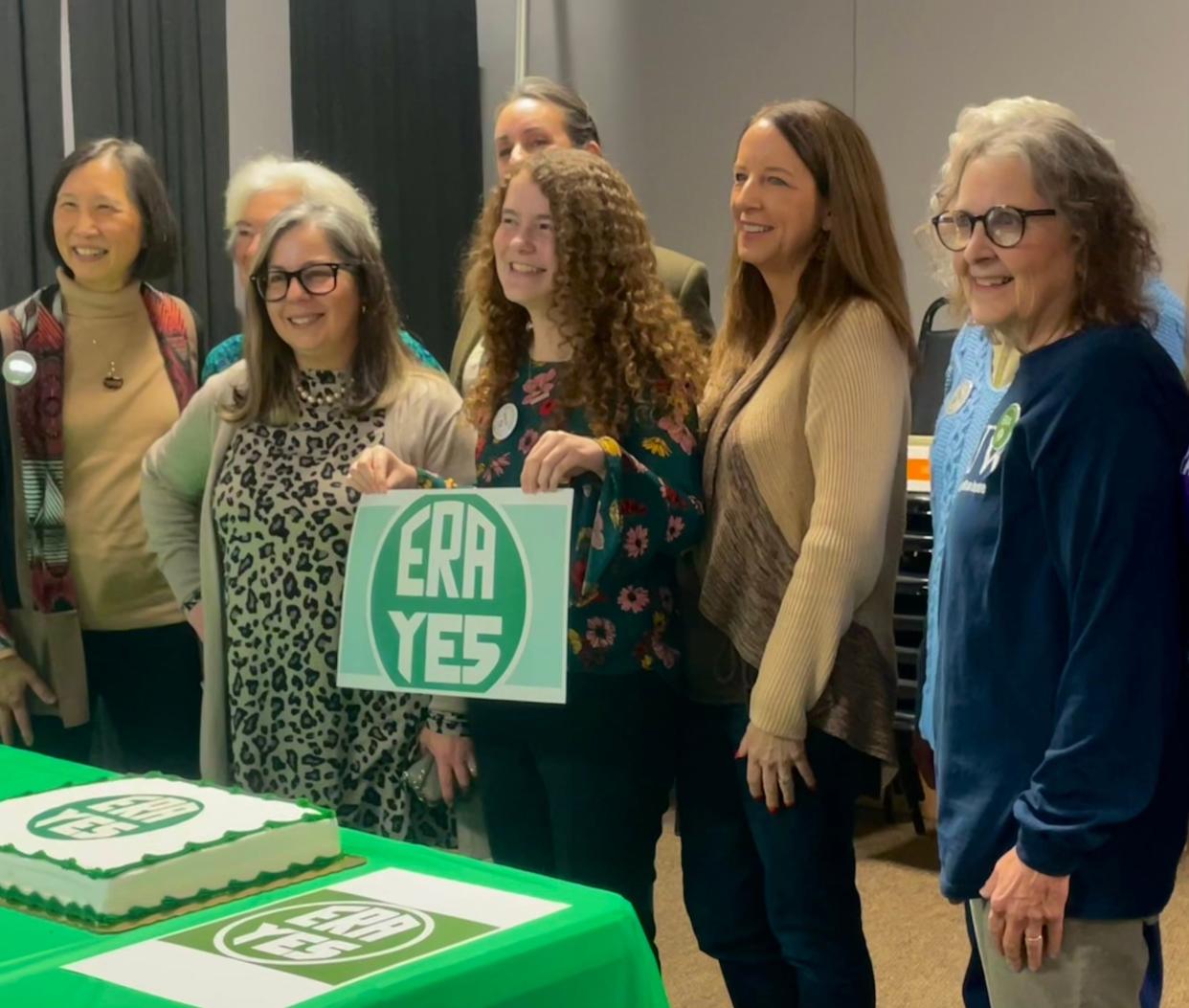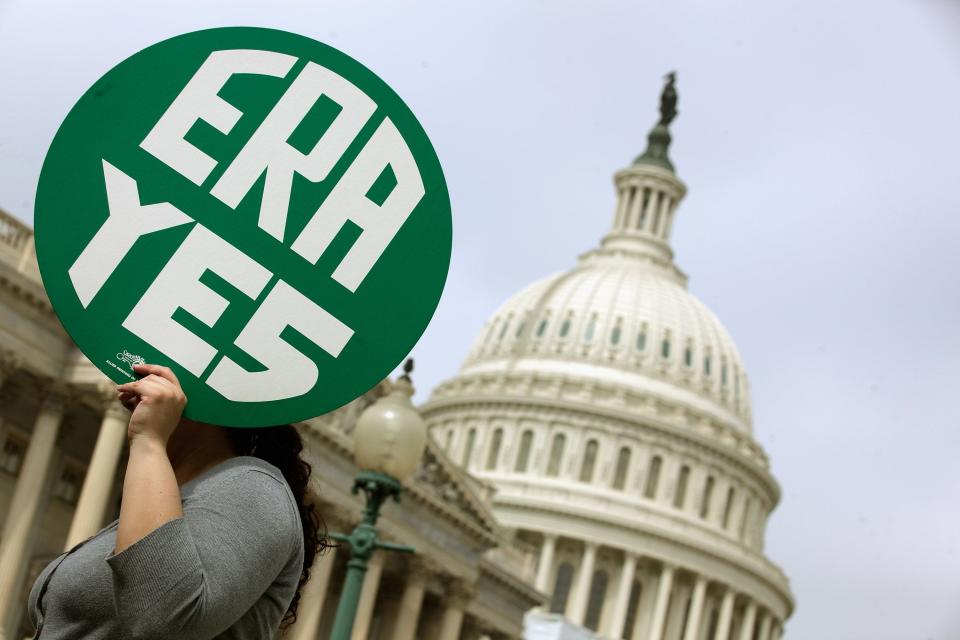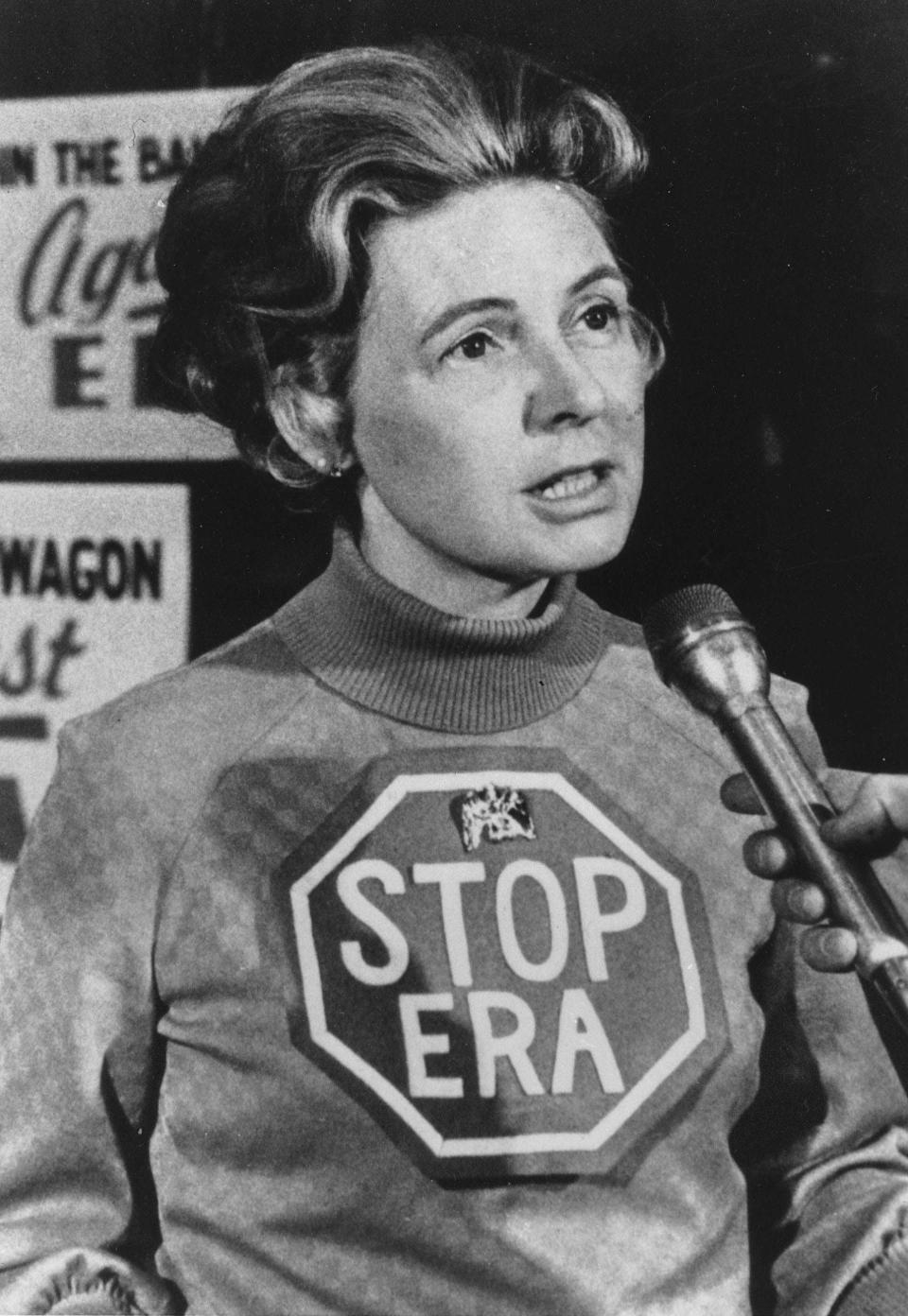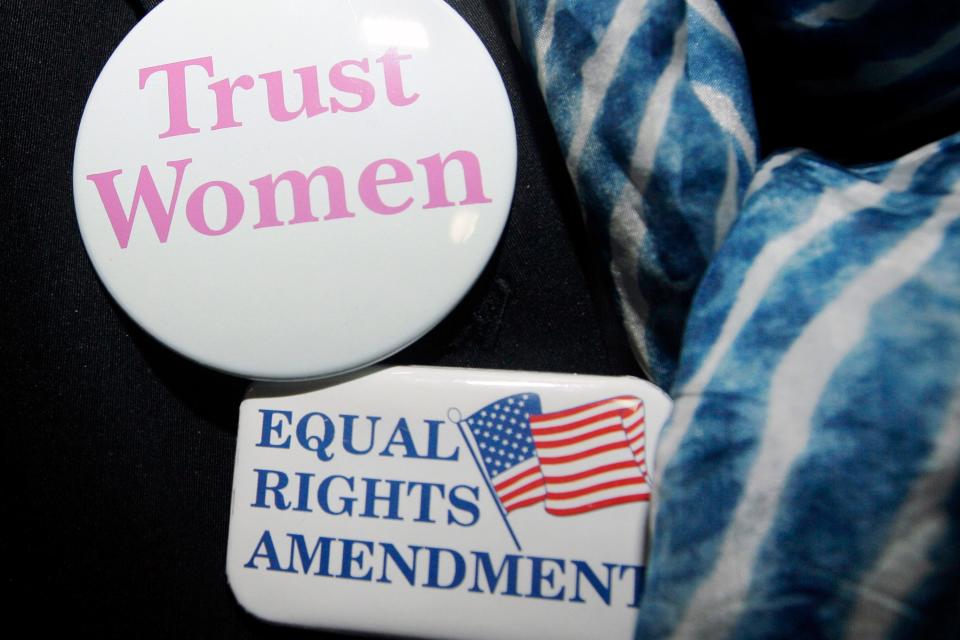Wisconsin ratified federal Equal Rights Amendment 50 years ago yet still struggles to pass a state version

APPLETON — Women’s rights advocates and Democratic lawmakers gathered in Appleton earlier this month to announce a renewed effort to institute an Equal Rights Amendment to the Wisconsin Constitution.
The bill intends to amend the state constitution to guarantee equal rights “on the basis of sex, gender identity, race, color, sexual orientation, disability, religion, national origin, marital status, family status, age, ancestry or any other immutable characteristic.”
“After more than 50 years, it’s embarrassing that any Wisconsinite has fewer rights than another,” said state Rep. Lori Palmeri, D-Oshkosh, author of the bill, at a Feb. 5 press conference.
To be added to the state constitution, the amendment would need to pass two legislative sessions and a public referendum.
And as lawmakers are wrapping up the current legislative session, it’s unlikely the ERA — which hasn’t even received a bill number yet — would make it through the first step, especially with a Republican-controlled Legislature where less than 2% of Democratic-authored bills get a hearing.
“It’s going to be a real heavy lift,” Palmeri told The Post-Crescent.
Last week’s proposal marks the fourth time lawmakers have attempted an ERA to the state constitution since Wisconsin ratified the federal version in 1972.
Wisconsin was once a leader in women’s rights policies, being one of the first states to ratify the federal ERA.
But while Democratic lawmakers and women’s rights advocates have pushed for a state ERA for decades with varying degrees of success, Wisconsin is now in the minority as a state without any equal rights protections, according to a state-level Equal Rights Amendments report from Brennan Center for Justice, a progressive policy institute.
The report says 28 states have some kind of equal rights provision with 22 states having their own state equal rights amendments.
ERA adversaries say state law already reflects equality among the sexes, and proponents say true equality won’t be reached until women are stated equal in the constitution.

Wisconsin has historically led the way in women’s rights policy
After the federal ERA passed Congress in March 1972, Wisconsin was one of the earliest states to ratify — signing off a month after the amendment was sent to the state legislatures.
But before the ERA, Wisconsin was historically at the forefront of women’s rights policy in the country during the 20th century.
Throughout the mid-to-late 1800s, bills granting women suffrage came before Wisconsin’s Legislature and continuously failed. But women changemakers started changing the tides at the turn of the century.
When Congress approved the 19th Amendment, which afforded women the right to vote, Wisconsin quickly passed the necessary ratification document on June 10, 1919, becoming the first state to do so and narrowly beating Michigan and Illinois who also ratified it the same day.
A few years later in 1921, the Wisconsin Legislature passed the nation’s first equal rights bill.
The bill gave women the same rights as men in the areas of suffrage, holding office and custody of children.
Prominent suffragist Alice Paul soon after congratulated Wisconsin, writing “This makes Wisconsin the only spot in the United States where women have, or ever have had since the beginning of our country, full equality with men.”
Wisconsin falls short of passing a state Equal Rights Amendment in 1973
Soon after the federal ERA successfully made it to the House floor, Wisconsin legislators began drafting a state version.

The state Legislature quickly passed the bill through two legislative sessions in 1971 and 1973. From there, the ERA was sent to the electorate to vote on.
By this time, opponents of the federal ERA, like Phyllis Schlafly, began campaigning against it, arguing the ERA would take away gender-specific privileges, and successfully turned much of the American public against its ratification.
Ultimately, Wisconsin’s referendum on its ERA was rejected in April 1973 on a vote of 447,240 to 520,936.
According to Associated Press coverage at the time, after the referendum failed, state advocates were hopeful that the federal version would soon pass and make the state effort unnecessary.
Democratic lawmakers spark a renewed effort to pass a state Equal Rights Amendment
Federal ERA ratification stalled by the end of the 1970s, but advocates mounted a new push in recent years. Nevada ratified the ERA in 2017, Illinois in 2018 and Virginia became the pivotal 38th state to ratify it in 2020.
But after all the necessary states were needed, the ERA fell short in a vote by the U.S. Senate to enshrine it into the Constitution. From there, Wisconsin legislators launched a renewed attempt at passing a state ERA.
Democratic state legislators introduced an ERA in 2019 and again in 2021 with little success.
Mary Ann Rossi, a prominent Wisconsin feminist and member of the Wisconsin Commission on the Status of Women in the 1970s, said she had no idea the previous ERA bills were even introduced.
“Nobody heard about it,” Rossi said. “People were resting on our laurels and thinking things were better for women — not true.”
The past two bills failed to reach committee assignments and were thrown out soon after being introduced.
State Rep. Lee Snodgrass, D-Appleton, who co-authored the 2021 bill and recent 2024 ERA, said Democratic lawmakers plan to have a first-term representative author an ERA each legislative session until some leeway is made.
“We are hoping if we keep introducing it and making sure people know that this has not yet passed, that we have an opportunity to move it forward,” Snodgrass said at the press conference.
‘We need to take action at the state level’
Advocates point to legal battles, gender pay gaps and lack of abortion rights as a continued need for an ERA.
Lawrence University student Megan Eisenstein said she was compelled to fight for women’s rights following the overturning of Roe v. Wade in 2022, which removed the federal protection to abortion rights.
“I think it’s crazy that when it comes to abortion access, my grandma and my mom had more rights than me,” Eisenstein told The Post-Crescent.
Eisenstein is from Illinois and moved to Wisconsin for college months after the overturning of Roe. Her frustration drove her to get involved with policy issues and statewide activism, joining the Lawrence University Democrats and getting involved in the ERA proposal.
The National Organization for Women argues that the ERA could be interpreted as a restoration of abortion rights. The feminist organization argues the denial of any medical care for women is sex discrimination and therefore the ERA would negate laws restricting abortion procedures.

Mid-Day Women’s Alliance member Irene Strohbeen told The Post-Crescent that after Congress voted not to enshrine the ERA into the Constitution, she realized efforts needed to switch toward passing a state version.
“I realized we can’t do it at the federal level, so we need to take action at the state level,” Strohbeen said.
And after learning that the last two state ERA attempts didn’t make it anywhere, she wants to make sure the public knows about this attempt.
She said, “We need to send a message to the public that it would be valuable to have an Equal Rights Amendment in the state.”
Sophia Voight covers local government and politics in the Fox Valley for The Post-Crescent. She can be reached with feedback and story tips at svoight@postcrescent.com.
This article originally appeared on Appleton Post-Crescent: Democrats take another swing at state Equal Rights Amendment

